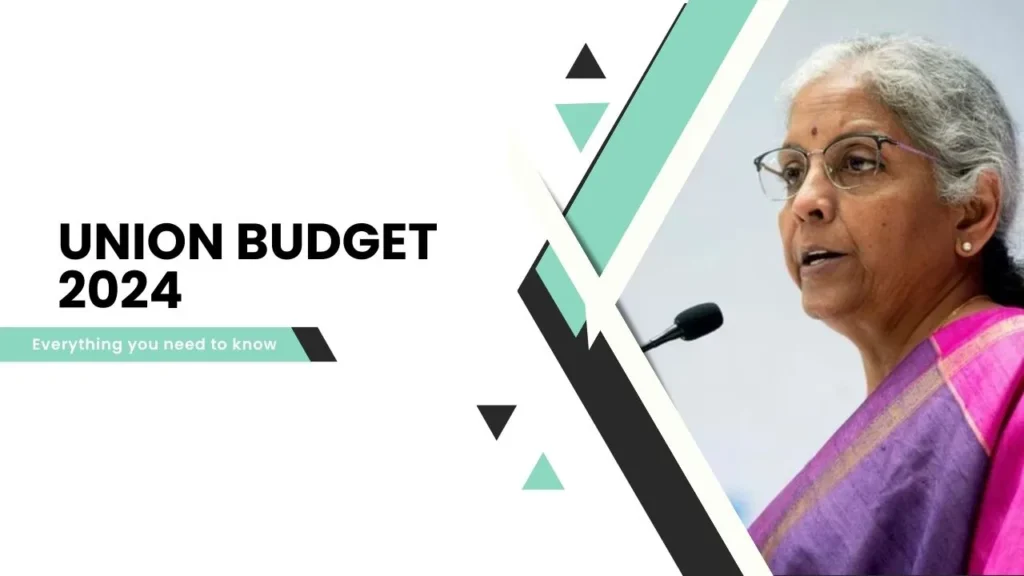Published on Taaza Job Alert

Here are some sample multiple-choice questions (MCQs) related to the Union Budget 2024. These questions cover various aspects, including fiscal policies, economic indicators, and key announcements.
| Nirmala Sitharaman presented the Union Budget in the year 2024. At what time did she do so? a. 5th time b. 7th time c. 6th time d. 4th time Ans. c. 6th time |
| What is the percentage increase in the Defence Outlay as announced in Budget 2024? A) 5.5% B) 8.9% C) 11.1% D) 14.5% Ans: C) 11.1% |
| What is the revised estimate of the fiscal deficit as a percentage of GDP in Budget 2024? A) 4.2% B) 5.8% C) 6.5% D) 7.1% Ans: B) 5.8% |
| How does the revised fiscal deficit in Budget 2024 compare to the previous estimate? A) Decreased by 1.3% B) Increased by 0.5% C) Remained unchanged D) Increased by 1.8% Ans: B) Increased by 0.5% |
| What is the main challenge mentioned in the statement regarding Compressed Biogas (CBG) blending mandate? A) Lack of government support for CBG production. B) Difficulty in enforcing the blending mandate. C) Limited availability and transport challenges for CBG. D) Insufficient awareness about the benefits of CBG blending. Ans: C) Limited availability and transport challenges for CBG. |
| What is the significance of the 11.1% higher capex budgeted for infrastructure, despite being lower than the run rate in previous years? A) It indicates a decrease in overall infrastructure spending. B) It suggests a shift towards more efficient and targeted infrastructure investments. C) It implies an overspending trend in the infrastructure sector. D) It reflects a lack of focus on infrastructure development. Ans: B) It suggests a shift towards more efficient and targeted infrastructure investments. |
| Why does the statement suggest that the private sector will have to step in for maintaining growth momentum in the context of the 11.1% higher capex budgeted for infrastructure? A) The government lacks the funds to support infrastructure projects. B) The capex is insufficient to meet the growing demands of infrastructure development. C) The private sector is traditionally responsible for funding infrastructure projects. D) The higher capex is not aligned with the overall economic growth strategy. Ans: B) The capex is insufficient to meet the growing demands of infrastructure development. |
| How can investments in preventing foot and mouth diseases contribute to improving India’s milch animal yield? A) By reducing the number of milch animals. B) By increasing the global average milch animal yield. C) By enhancing the quality of feed for milch animals. D) By addressing a key factor limiting milch animal productivity. Ans: D) By addressing a key factor limiting milch animal productivity. |
| The Union Budget is presented in which house of the Parliament? a. Lok Sabha b. Rajya Sabha c. Both d. None Ans: Lok Sabha |
| What of the following period is covered in the Union Budget? a. April to March b. January to December c. July to June d. October to September Ans: a. April to March |
| Which document outlines the estimated receipts and expenditures of the government for a particular fiscal year? a. Economic Survey b. Annual Financial Statement c. Finance Bill d. Monetary Policy Ans: b. Annual Financial Statement |
| The Union Budget of India is also known as: a. Fiscal Statement b. Economic Plan c. Annual Financial Plan d. None of the above Ans: c. Annual Financial Plan |
| What is the primary source of revenue for the Indian government according to the Union Budget? a. Income Tax b. Goods and Services Tax (GST) c. Corporate Tax d. Customs Duty Ans: b. Goods and Services Tax (GST) |
| In the Union Budget, what is the term used for the difference between total revenue and total expenditure? a. Fiscal Deficit b. Revenue Deficit c. Budget Deficit d. Economic Deficit Ans: a. Fiscal Deficit |
| Which tax was introduced in the Union Budget 2020-21 for a simplified personal income tax structure? a. Goods and Services Tax (GST) b. Direct Tax Code (DTC) c. Dividend Distribution Tax (DDT) d. Agricultural Infrastructure and Development Cess (AIDC) Ans: b. Direct Tax Code (DTC) The concept of Zero-Based Budgeting was introduced in which Union Budget? a. 2018-19 b. 2017-18 c. 2016-17 d. 2015-16 Ans: 2016-17 |
| The Finance Minister’s Budget speech usually begins with which traditional Indian salutation? a. Vande Mataram b. Jai Hind c. Om Shanti d. Satyameva Jayate Ans: d. Satyameva Jayate |
| What is the term used for the government’s plan for its revenue and expenditure for the upcoming fiscal year? a. Fiscal Policy b. Annual Financial Plan c. Budget Estimate d. Economic Survey Ans: c. Budget Estimate |
| In which year was the first Union Budget of independent India presented? a. 1945 b. 1947 c. 1950 d. 1952 Ans: c. 1950 |
| Who was the first Finance Minister of independent India to present the Union Budget? a. Morarji Desai b. R. K. Shanmukham Chetty c. John Mathai d. C. D. Deshmukh Ans: b. R. K. Shanmukham Chetty |
| The term “Interim Budget” is used when: a. A new government is formed b. The government is facing financial constraints c. A full budget is presented during an election year d. The budget is presented for a short period before a new fiscal year Ans: d. The budget is presented for a short period before a new fiscal year Who was the first woman Finance Minister of India to present the Union Budget? a. Indira Gandhi b. Nirmala Sitharaman c. Arun Jaitley d. Pranab Mukherjee Ans: b. Nirmala Sitharaman |
| The Goods and Services Tax (GST), a major tax reform, was introduced in the Union Budget of which year? a. 2015-16 b. 2016-17 c. 2017-18 d. 2018-19 Ans: c. 2017-18 Which Finance Minister presented the “Budget for New India” in 2019, focusing on the 10-dimensional vision for the country? a. Arun Jaitley b. Piyush Goyal c. Nirmala Sitharaman d. Rajnath Singh Ans: c. Nirmala Sitharaman |
